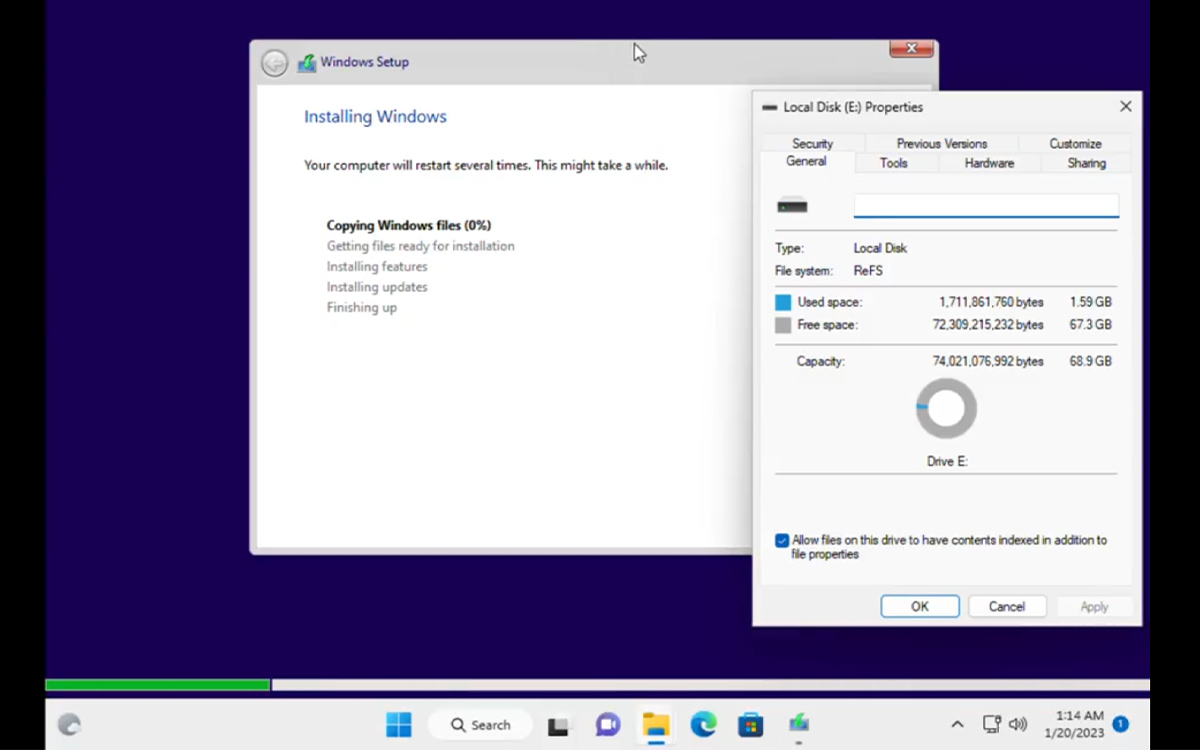Very discreetly, Microsoft is releasing the NFTS, a file system launched just 30 years ago. Thus, in the latest build of Windows 11, it is the ReFS which makes its appearance.
the NTFS (New Technology File System) will gradually bid us farewell. Introduced in 1993 with Windows NT 3.1, he who owned Microsoft’s OS has largely democratized with Windows 2000 and Windows XP. So much so that it is found everywhere today, and that competing operating systems now support it, either natively or using third-party software.
But here it is: Microsoft has decided to replace NTFS with another file system called ReFS (Resilient File System). Launched in 2012, at the same time as Windows 8, this format has long been reserved for the various editions of Windows Server that have followed one another. Since Windows 8.1, it is possible to support ReFS volumes, but not to install the OS on them. Users of client versions of Windows have therefore never really been able to take advantage of it. But with Windows 11, things should change.
Windows 11 supports ReFS, moving away from NTFS?
In the Windows 11 build 25281 (available through the Dev channel of the Windows Insider program), it is possible to support ReFS. This feature allows on the one hand to format a secondary hard drive in this format, but also to install the operating system there. Note, however, that the operation of this option remains very uncertain for the moment: some users have managed to set up Windows 11 on a ReFS partition, while others have not. Also, it is not enabled by default (must use ID 42189933 under Velocity).
Read also: Windows 11 – the file explorer is going to get a big facelift
But by the way, what is ReFS? According to Microsoft, ReFS is “designed to maximize data availability, efficiently scale large datasets across diverse workloads, and provide data integrity with resilience to corruption. This system is intended to support more storage scenarios and provide a foundation for future innovations.” To put it simply, it is an improved version of NTFS, which makes it easier to manage large volumes of data.
Does this mean that Microsoft will quickly abandon NTFS? Probably not immediately. But it is likely that the file system will be offered in the next builds of Windows 11 at the time of installation. And that in the long term, Microsoft favors it to the detriment of NTFS, which is beginning to show the weight of the years when it comes to processing large volumes of data.
If you want to take a look at this new Windows 11 feature, Xeno (tweeted below) has released a “patched” and unofficial Windows 11 build 25281.

